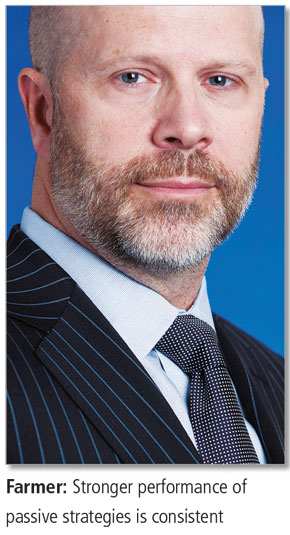Passive investment strategies such as smart beta and exchange-traded funds (ETF) are anticipated to gain further momentum in 2015 versus active investment strategies. Investors continue the search for better returns and lower costs amid volatile markets and an uncertain economic environment.
These trends will push greater demand for indexes that provide the basis for passive investment strategies and products. “The adoption of smart beta strategies is a long-term trend and we believe the interest to tap into the space by using factor-based indices will continue to grow this year,” says Jamie Farmer, managing director of S&P Dow Jones Indices (SPDJI). He has responsibility for leading the index investment strategy and index data services teams.
 |
|
In January 2015, SPDJI has several factor-based indices launched worldwide, including Asia. In Japan, it recently introduced the S&P Japan 500 GIVI (Global Intrinsic Value Index), a multi-factor measure that combines intrinsic value with low volatility. This is a more targeted version of the existing S&P GIVI Japan, which the Government Pension Investment Fund (GPIF) tapped as one of the performance benchmarks in an overhaul of its portfolio last year.
“We also see this same strategy gaining traction in several other markets as investors increasingly seek for higher risk-adjusted returns in the mid- to longterm at a lower level of risk. We believe that with the maturing of Asian markets, the demand for such strategies will only become stronger,” Farmer says.
As of December 12 2014, the assets under management (AUM) of exchange traded products (ETPs) based on SPDJI has reached US$781 billion, a 20% increase over 2013 and a 31% market share, more than double the next index provider. Further assets are invested in ETPs, which include ETFs and exchange-traded notes (ETNs) based on indices calculated and published by SPDJI than any other index provider in the world.
During the same period, there are 606 ETPs linked to indices from SPDJI. In addition, about 25% of ETF issuers globally have a product based on an index it published.
“Over the last few years, as the ETF business has exploded, passive business has also exploded. You’ve seen a whole host of new entrants come into the business, and our business has benefited enormously from the growth of ETFs,” Farmer adds.
The rapid global growth of the smart beta and ETF business points to the underlying benefit of passive investment strategies versus active investment strategies and Farmer says the entry of new passive product providers into the market supports the notion that “passive trumps active”.
SPDJI has an ongoing research known as the S&P Dow Jones indices versus active (SPIVA) which affirms that passive strategies outperform active strategies in the long-term.
The SPIVA study, which has been ongoing for over 10 years, includes data from multiple markets such as the US, Australia, Canada, Europe and India and will soon include Asia-specific information. This study compares data on the performance of actively-managed mutual funds against their relevant benchmark and carves the data up in different ways such as large cap, small cap, midcap, international, fixed income, among others.
“We’ll just compare their performance versus the benchmark, which is the very heart of what performs better after cost. And consistently over time, we found that passive beats active. Roughly speaking in the US, usually two-thirds to three-quarters of actively management mutual funds underperform their benchmark after cost,” Farmer notes.
The results of the SPIVA study indicate that the stronger performance of passive strategies versus active strategies over the long-term is not one-off but consistent.
In addition, the SPIVA study also does a “persistence scorecard” which tracks the performance of top quartile mutual funds during the period following their best showing. Data from this scorecard indicate that the actively-managed mutual funds which performed well are usually unable to maintain their top performance in the following period.
“The scorecard will track their performance over the coming years and what it shows is that even if an actively- managed mutual fund does perform well, it’s a top quartile manager, the ability to stay in that top quartile over one, two, four, five more years, just drops off like a stone. It’s very hard to stay in the top quartile,” Farmer observes.




.jpg)
.jpg)


